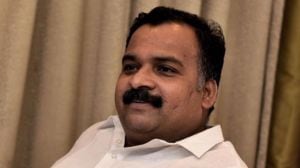The other factor: Meenas
In the ongoing Gurjjar protests in Rajasthan-surfacing a year after a similar agitation for Scheduled Tribe status-there seems to be a distinct refrain: don8217;t mention the rival Meena community.

In the ongoing Gurjjar protests in Rajasthan-surfacing a year after a similar agitation for Scheduled Tribe status-there seems to be a distinct refrain: don8217;t mention the rival Meena community.
8220;We are not competing with anyone. Our agitation has nothing to do with anyone, not even the Meenas. We are fighting our battle with the state government,8221; insists Gurjjar leader Kirori Singh Bainsala, who is spearheading the agitation in Bayana.
After last year8217;s bitter experience when the Meenas8212;a community that enjoys ST status but does not want Gurjjars to get it8212;clashed with the Gurjjars, Bainsala and his men seem to be treading cautiously. While Sikandara and Bayana reel under heavy protests that spread to other parts of the state by Tuesday, the protests began, in a strange coincidence, in places where there aren8217;t too many Meena-dominated villages. Across Bayana, where thousands of Gurjjars continue to block trains, Meena villages are few and far between. Sikandara, where the police firing claimed more than a dozen lives and where Gurjjars are still sitting on the national highway with six corpses, is at least 35 kilometres away from the Meena-dominated belt of Mahwa.
Interestingly, Badabujurg village, on the Khedla road in Mahwa, is home to BJP leader K.L. Meena. Here, the Meena community is fuming. 8220;If you think Meenas will stand and watch Gurjjars being given sops by the government, you are mistaken. There is no denying the fact that once they try encroaching our ST category space, we8217;ll open a war,8221; said Prabal Meena, a Badabujurg resident.
The community doesn8217;t mind Vasundhara Raje8217;s recommendation of 4-6 per cent quota for Gurjjars. 8220;We are not opposed to Gurjjars getting reservation benefits. But we won8217;t tolerate their inclusion in the ST category. As long as the state government is doing our job, we will watch. The day it stops, we8217;ll start,8221; Kamal Prasad Meena, another Badabujurg resident states with a grin.
It all began in 1999 when then prime minister Atal Bihari Vajpayee announced OBC status for Jats. The Jats are now backing the Gurjjars8217; demand for ST status, which leaders from both the Congress and the BJP say is not a good sign. 8220;Once one community8217;s demand is met, other communities will stand up and start agitating. It8217;s like opening a Pandora8217;s box,8221; says a state BJP leader. The fears are not unfounded. After the Gurjjar agitation last year, Chief Minister Raje8217;s office was flooded with demands for reservations from communities like Nayaks, Nais, Malis, Raibaris and Rawats8212;several of whom share OBC status with the Gurjjars.
Moreover, Gurjjar youths openly talk about how the Meenas have reaped the benefits of ST status over the years while they have stayed backward. 8220;Meenas have IAS and IPS officers. Many doctors in state PHCs are Meenas. But look at us. We don8217;t even have enough to eat,8221; says 17-year-old Yogendra Singh Gurjjar, who has bunked school in neighbouring Boondi to take part in the Gurjjar agitation.
- 01
- 02
- 03
- 04
- 05































